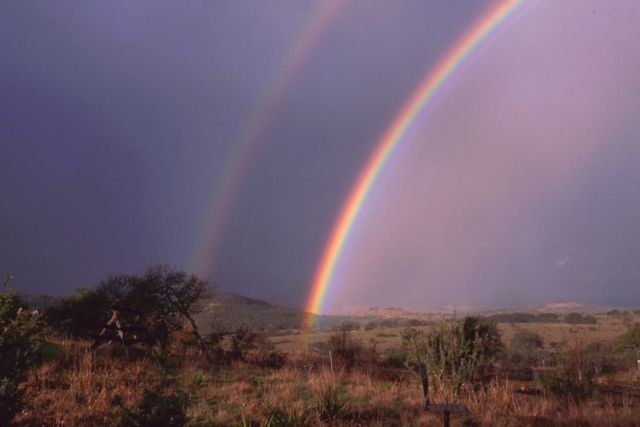Selah, the Texas Ranch that Brought Water from Stone
By: Amos S. Eno
Posted on:01/17/2012 Updated:01/24/2012How David Bamberger's land ethic was born and transformed a "beat up" piece of Texas ground.
David Bamberger, owner and architect of the transformation of one dry, abandoned, and gully-pocked Texas ranch into an award-winning oasis for wildlife, cattle and people, was born into poverty during the Depression era. “I did not have electricity or running water, and never inherited anything,” explains Bamberger. “But I was outside all the time. My mother taught us all about the butterflies, birds, trees and grasses, and which berries, nuts and leaves were edible.”
Inspired to Create a "Pleasant Valley"
Bamberger recalls a book given to him by his mother and written by Pulitzer Prize-winning novelist Louis Bromfield. Pleasant Valley is the story of how Bromfield spent 17 years abroad, observing the way Europeans took care of their land, and afterwards he returned to his grandparents’ abandoned Ohio farm and spent the rest of his life restoring it. That region of Ohio was not far from where Bamberger hims elf was raised.
elf was raised.
“I carried that book with me through the military, it inspired me. I always said if I ever make any money, I’ll do the same. When I came to Texas, the place grew on me until I fell in love with it. But a lot of Texans have not been good stewards of the land,” explains Bamberger. “Too much land has been overgrazed and exploited.”
“I’m not claiming credit for all that we’ve done here,” exclaims Bamberger. “I’ve had all kinds of help. I did want to see if it was possible to return this kind of real estate to good condition.” When Bamberger first began looking at property in Texas, the real estate agent kept showing him the wrong thing. He told the man, “I want something bad, beat up, abused!” The realtor replied, “Young man there’s a lot of that around!”
After purchasing his 5500-acre ranch in 1969, Bamberger began by asking the Soil Conservation Service (now NRCS) for their help. “They told me, ‘Hope you’re not trying to raise cattle! It will take 41 acres to support one cow.’ Our wildlife was almost nonexistent, and we counted a total of 48 bird species year round.”
Bringing Back the Water by Bringing Back the Land
Bamberger did many things to restore his land. Primary restoration techniques were removal of ashe juniper, which in the absence of fire combined with overgrazing had taken over former grasslands, and planting of native grass species.
“We began habitat restoration in the first year and two and a half years later, our first spring came back to life from our underground aquifers - this is from a property that lacked any running water whatsoever when I purchased it. Today, we have 11 cased springs that supply our water and many others, which is why my book is called Water from Stone.” The book was the publisher’s third best seller in 2007 and is now in its fourth printing and still selling.
Selah, as Bamberger named his ranch preserve, is a word that psalmists in the Bible used as a musical term to mean “stop, pause, and reflect on this.” Bamberger says Selah has the same meaning for him as Walden did to Thoreau: it’s a place to pause, reflect, and enjoy nature while contemplating, “what is my duty having this tract of land?”
Currently, Selah receives about 4000 visitors per year, and five families live there without any water well or pump - all the water is supplied by sources that did not exist until Bamberger began restoring the land. Now it takes 22 rather than 41 acres to support a cow (pre-drought), and Bamberger uses rest rotation grazing to maintain the health of his grass covered hills and steep canyons. Volunteers with the Texas Parks and Wildlife Department and local Audubon chapters have censused a total of 216 bird species, year-round.
Conclusion
 Sign In
Sign In
 Sign In
Sign In
